
Turning wooden bowls on his lathe is one of Cannabis Innovation Centre Director Greg Baute’s many hobbies / George Le Masurier photo
CIC Director Greg Baute hopes to redefine cannabis breeding
“Logic will get you from A to B. Imagination will take you everywhere.”
– Albert Einstein
Greg Baute, the director of breeding and genetics at the pioneering Cannabis Innovation Centre in Comox, is a scientist. And that means, if you can imagine, every day he will clone plants, phenotype them, explore terpenes, take DNA samples, conduct controlled pollinations and pour over pages of data compiled by a team of bioinformaticians.
Even if you don’t know what that means, you probably envision research scientists as people who eat, sleep and breathe graphs and charts of their collected data, upon which they will apply cold logic and reason. And even a short conversation with Baute, 33, will tell you this is partly true.
He can take you quickly and so deeply down a rabbit hole of information about plant architecture, genetics, sunflowers, or even wood turning on his shop lathe, that before you realize you have no idea what he’s talking about, you had believed it all made perfect sense to you, even though it did not.

Baute points out the traits of a wild sunflower from his birds eye maple desk, still under construction
But to fully understand Baute, you need to know that there’s another, equally powerful side to his scientific mind: his imagination. He’s dreaming about what’s possible beyond existing knowledge.
And that’s what pulled the Ontario native from a good job in California back to Canada to head up the world’s first cannabis breeding and genetics laboratory.
“In the 1960s, P. Leclecq was the first person to cross wild sunflowers, and he changed the sunflower growing business forever,” says Baute, looking up excitedly from an article on his laptop that he’s using to explain genomic selection.
“He produced 30 percent higher yields … it’s something that won’t ever happen again!”
Baute says cannabis is at that same level of opportunity today. And, because of legalization, Canada is the hotbed of cannabis science.
“Somebody in the next five to 10 years will make a similar discovery and define how cannabis is bred forever,” he said. “It happens only once. And it’s just too much fun not to try.”
A family of farmers
Greg Baute was born into a family of farmers. His great-grandfather started the family farm in an area of southern Ontario where most of Canada’s F1 seed corn is grown. His grandfather also farmed. Then, in 1985, his parents started an independent hybrid seed corn company, called Maizex Seed Inc.
Maizex Seeds initially produced hybrid corn for food grade corn and Canadian food processors, and also for the US wholesale market. Later, it developed hybrids for the Canadian market and entering products into provincial trials.
Baute recalls spending his summers detasseling corn in the family fields. It was an annual rite of passage for most Tilbury High School students, who were bussed to the fields to remove the immature pollen-producing tassels from the tops of the corn plants, and stomping them into the ground. It’s a form of pollination control, so the plants could be cross-bred to create hybrids.
He also remembers walking his parents’ fields and comparing plants with the hybrids they produced, a curiosity that inadvertently, he says, led to his passion to understand the process that causes it.
Baute earned a Biology degree from the University of Guelph, doing a thesis on how carrot flowers are developed for seed production. He studied molecular evolution, specifically hybrid rice, for his masters degree at the University of British Columbia.
During his work on the domestication and improvement of sunflower, which earned him a doctorate degree at UBC, Baute developed several hybrid sunflower lines now used in production around the world.
Before being lured to Comox, Baute worked as a trait geneticist, studying the “important and complex traits” in tomato.
“Where we are with cannabis today is where we were 100 years ago with tomatoes,” he said.
New Valley resident
Baute and his wife, Kasia, purchased a rural, two-acre property, just eight kilometres from the site of the future Cannabis Innovation Centre (CIC) near the Comox Airport. An easy commute for an avid cyclist.
If the CIC had been located in Vancouver, Baute says he might not have taken the job. But the opportunity for a more rural lifestyle sealed the deal, and the couple have found the community welcoming.

Baute and Kasia share an office in their new rural Comox home
“There’s a lot of pride in the Valley … there are good restaurants, and the brewery scene is quite good,” he said.
While the CIC laboratory and greenhouse are being constructed, Baute has set up a temporary office in his home. He built his desktop out of bird’s eye maple from a fallen tree, working in a shipping container temporarily converted into a makeshift wood shop.
He has built some of their household furniture, but Baute’s real woodworking passion is turning bowls on a lathe. There’s room for a full woodworking shop in a new garage currently under construction.
He’s also a runner and picks up his electric guitar a few times every week.
The couple have been landscaping around their new home, including a garlic bed, raised vegetable beds and preparing the site where Baute hopes to plant about 400 sunflower plants this spring.
Baute and Kasia met while both were pursuing undergraduate degrees at the University of Guelph. She earned a Bachelor of Science degree in toxicology and a Master of Arts degree in medical genetics at UBC.
While Baute was working in California, Kasia did community service work at a bird sanctuary, hospice and at a community outreach shelter. She is currently working on a master’s degree in counselling, which is online through Yorkville University.
Typical day at the lab
When it’s finished early this summer, the Cannabis Innovation Centre will have a 21,000 square foot greenhouse broken down into seven isolated breeding zones, and a 10,000 square foot laboratory.
The facility was conceived and planned by Jonathan Page, PhD, whose Anandia Labs was bought out by Aurora Cannabis, of Edmonton, in August. Page was the first scientist to sequence the cannabis genome. He and his twin brother, Nick, grew up in the Comox Valley.
The CIC laboratory building is being pre-manufactured in BC with parts from Europe. The greenhouse is being prefabricated in the Netherlands — “the epicentre of greenhouse technology” — and should arrive on site sometime in February.

Baute takes a DNA sample from a sunflower plant at UBC while completing his PhD degree
When the CIC opens, Baute and his staff will be cloning plants and germinating seed, and finalizing the number of plants of each genotype they will grow, and how they will be arranged in the greenhouse. Throughout the grow cycles, they will collect data on growth habit, plant architecture and disease resistance.
“The process of recombination is totally random,” he said. “Like shuffling a deck of cards.”
The CIC will grow plants to seedlings, then take a leaf punch to test its DNA. They will throw out the ones they don’t want, and grow up the others.
“Sequencing one gene is less expensive than growing all plants to maturity,” he says.
For the nursery work (where they will produce seeds), staff will treat plants and bag them for controlled pollinations.
Harvest is the biggest job, especially at the CIC where each plant will be individually phenotyped as it is harvested. They will measure things like total biomass, total flower weight, how consistent the flower size is, the shape and color of the flowers and so on.
All along the way, Baute will gather information from each experiment that can feed into and influence the others. For example, he might find that upon harvest a plant has an exceptionally high yield, so he might use stored pollen from it to do more crosses.
“For me, this means a lot of coordinating projects and information between team members and working with them to make decisions,” he said. “The experiments will also influence, and be influenced by, all the other research that is happening across Aurora, which translates to me being on the phone for a good chunk of time each day.”
All the flowers grown in the CIC greenhouse will be destroyed after their value for research has expired.
Baute is in the process of assembling a team of scientists to work on site, and bioinformaticians who will mostly work remotely from locations around North America.
No transgenic plants at the CIC
Baute is careful to note that the Comox cannabis laboratory will be doing only marker-assisted selection, not making transgenic plants, which are commonly but inaccurately referred to as genetically modified organisms (GMO).
“GMO is an unfortunate term. What most people mean by GMO is transgenic,” he said. “Transgenic is an organism that contains genetic material into which DNA from an unrelated organism has been artificially introduced — it leaps over species barriers. It creates changes that pollination could not do.”
BT Corn, for example, has been modified with the Bacillus thuringiensis (Bt) bacterium found in soils that naturally produce a protein that selectively kills a few specific insect species.
But the CIC’s work will do recombination staying within the primary gene pool of cannabis to select for disease or pest resistance.
“Something that’s only achievable through plant sex,” he said.
Baute says that with cannabis there’s no need to engage in transgenics because there hasn’t yet been any scientific breeding. It would be years before there are such diminishing returns from breeding that other technologies would be considered.
“There are still gains in breeding tomatoes,” he said, noting that plant has undergone 100 years of scientific enquiry.
What’s next
Baute is anxious to get his laboratory and breeding program up and running, and so are other scientists who are now delving into the cannabis plant. As with every other scientific discovery in the history of humankind, it’s important who gets there first.
All other crops in the world have had game-changing breakthroughs, similar to the sunflower example cited by Baute.
“The reason it hasn’t happened yet for cannabis is not because science has neglected the plant. It’s been illegal,” he said.
Q&A WITH ANANDIA LAB FOUNDER JONATHAN PAGE
Decafnation asked Jonathan Page, PhD, Chief Scientist for Aurora and the founder of Anandia Labs, a few questions about the Cannabis Innovation Centre and its Director, Greg Baute.
DECAF: What was it about Greg that convinced you to hire him for this important job?
Jonathan Page: A couple of things led me to hire Greg: he came highly recommended from colleagues I know well who all thought his set of skills in genomics and applied breeding were a perfect match for the Anandia job. One former supervisor of Greg’s told me he was a unique talent in Canada. This, and the fact that he visited Anandia and gave a great talk on his work with sunflowers, convinced me to hire him.
Decaf: What is the significance of Greg’s role as director of breeding and genetics?
Page: Greg’s R&D program and the Comox breeding facility itself will be world leading and one-of-a-kind. There is no other location in the US, EU, Australia or Israel that I know of that will have the facilities and know-how that we will have at Comox.
Decaf: What discoveries do you think the Cannabis Innovation Centre will make?
Page: I think there will be scientific discoveries made at Comox, and they will come from identifying the genetic basis for certain traits such as disease resistance and flowering time. These will revolutionize how cannabis is grown.
Decaf: What is your hope the CIC will ultimately achieve?
Page: I hope the CIC achieves three things: that it helps solve many of the challenges in cannabis production, and this makes it possible to grow cannabis with fewer inputs and concerns about contamination; that it furthers a scientific understanding of cannabis; and, that we create an environment in Comox that attracts scientists that are creative and innovative. In effect, we are not just building a cannabis lab but a think-tank for cannabis science.
DEFINITION OF TERMS
USED IN THIS ARTICLE
F1 hybrid seeds refers to the selective breeding of a plant by cross pollinating two different parent plants. In genetics, the term is an abbreviation for Filial 1 – literally “first children.” Crossing two genetically different plants produces a hybrid seed. This can happen naturally, and includes hybrids between species (for example, peppermint is a sterile F1 hybrid of watermint and spearmint). These F1 hybrids are usually created by means of controlled pollination, sometimes by hand-pollination.
Phenotype — (from Greek, Modern phainein, meaning ‘to show’, and typos, meaning ‘type’) is the composite of an organism’s observable characteristics or traits, such as its morphology, development, biochemical or physiological properties, behavior, and products of behavior (such as a bird’s nest).
Terpenes — There’s something about the aroma of cannabis that soothes the mind and body. Terpenes are what you smell, and knowing what they are will deepen your appreciation of cannabis whether you’re a medical patient or recreational consumer. Secreted in the same glands that produce cannabinoids like THC and CBD, terpenes are aromatic oils that color cannabis varieties with distinctive flavors like citrus, berry, mint, and pine.
Detasseling corn is removing the immature pollen-producing bodies, the tassel, from the tops of corn (maize) plants and placing them on the ground. It is a form of pollination control, employed to cross-breed, or hybridize, two varieties of corn.
Recombination — A process by which pieces of DNA are broken and recombined to produce new combinations of alleles. This recombination process creates genetic diversity at the level of genes that reflects differences in the DNA sequences of different organisms. Thus, recombination is one of the important means to promote and increase genetic diversity between generations.
Sources — Wikipedia, gardeningknowhow.com, nature.com, biologyonline.org, yourgenome.org, greenrelief.ca
SUBSCRIBE TO OUR NEWSLETTER

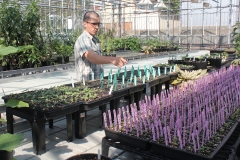

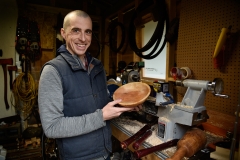
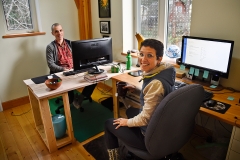

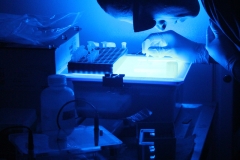
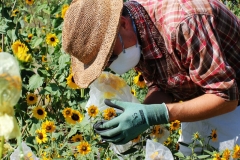
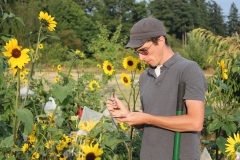
Hi George,
Two thoughts crossed my mind when I read your article on Greg Baute and the Comox Cannabis Innovation Centre. First, how wonderful it is to welcome people like Greg his wife, Kasia, to our community! Based on their descriptions in your article, they will fit in very nicely into the health and fitness culture of the Comox Valley.
My second thought was how fortunate we are to have attracted the Cannabis Innovation Centre to our local economy! It is a clean industry. It will create high-value employment in our area. I see potential for collaboration between the CIC and North Island College’s Horticulture program, including jobs for its graduates. It will contribute to our local economy. The CIC has the potential to “plant a seed” and “cultivate” a new industry cluster in the Comox Valley based on scientific research and engineering. Greg’s comments about his decision to relocate in the Comox Valley instead of Vancouver because of the lifestyle that we offer (to say nothing of our local breweries) will resonate with many other professionals like Greg.
Let’s develop an economic development plan for the Comox Valley that leverages the lessons learned from the CIC success story!
Cheers,
Ken McDonald
Comox, BC